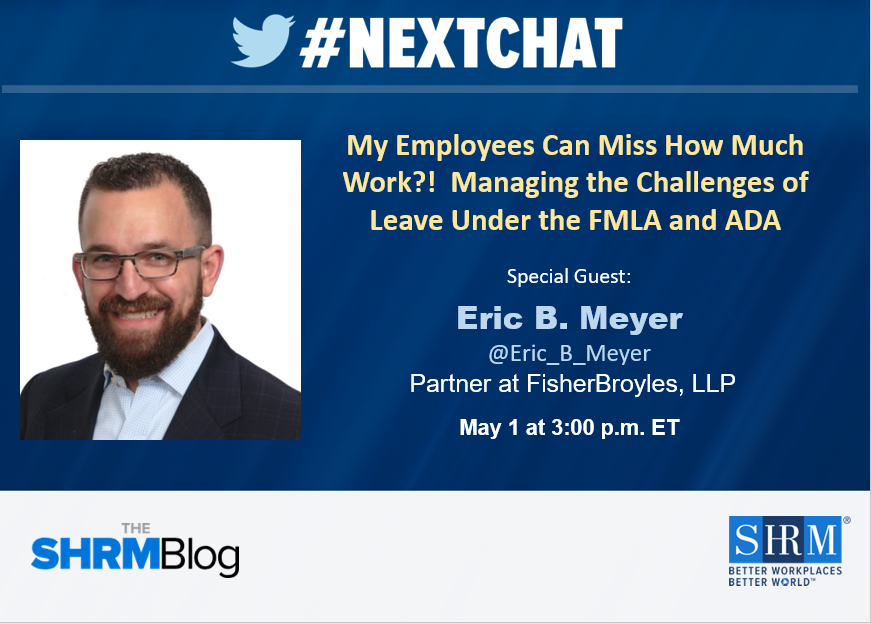Search
#Nextchat: My Employees Can Miss How Much Work?! Managing the Challenges of Leave Under the FMLA and ADA #SHRM19

Image Credit: SHRM.org
Last night, after the big Sixers win over the Raptors, I checked out the EEOC Newsroom to hunt for blog fodder for today.
That’s when I noticed that four of the five most recent EEOC press releases addressed claims of disability discrimination under the Americans with Disabilities Act.
Here is a $20,000 settlement for an individual whom the company’s CFO allegedly fired after informing the company that she must take medication because of her disability, anxiety disorder.
Here is a $30,000 settlement where a sheet metal worker / installer lost his left eye in an injury sustained outside of the workplace. According to the EEOC, after recovering from the injury and being cleared to return to work by his medical provider, his employer, without any assessment, refused to allow him to return to work.
Here, a company settled with the EEOC for $31,000 after it allegedly fired an employee in May 2016 after it accused her of “being unwilling or unable to control her epilepsy.”
Here, a company forked over $155,000 after it allegedly refused to hire a candidate after it learned that she required a job coach as a reasonable accommodation for her disability.
This is low-hanging fruit.
But, what about those ADA claims that involve leave from work? Now, those can be downright confusing. Indeed, leave-of-absence issues create many questions for HR, including:
- When are we required to begin a discussion about accommodations?
- How do you know if an employee is entitled to an accommodation?
- What if the accommodation violates company rules or costs the company money?
- Can we force the employee to use paid time off first?
- Can we dock pay for exempt workers?
Fear not, friends! I’ve got your back.
Please join @shrmnextchat at 3 p.m. ET on May 1 for #Nextchat with special guest, me (@Eric_B_Meyer). We’ll discuss best practices that will help employers effectively administer leave while reducing liability.
Q1. As an employer, what FMLA and ADA issues do you struggle with the most?
Q2. What are common FMLA and ADA mistakes employers make?
Q3. How do you know if an accommodation would impose an undue hardship on your business? What are the qualifiers?
Q4. What factors help you to determine when you can deny an FMLA or ADA leave request?
Q5. What are the signs that an employee is abusing FMLA leave, and how can employers curb it?
Q6. What are some tips for how employers can effectively administer FMLA and ADA leaves to reduce liability?
Q7. What are some good training guidelines for managers and supervisors to help mitigate FMLA and ADA leave risk for employers?
Q8. How can employers improve their internal practices to avoid ADA-related complaints and legal action?
And, if you’re going to #SHRM19, be sure to attend my MEGA session “My Employees Can Miss How Much Work?!: Managing the Challenges of Leave Under the FMLA and ADA” on Tuesday, June 25 at 7:15 a.m.
 The Employer Handbook Blog
The Employer Handbook Blog


